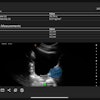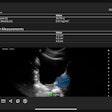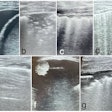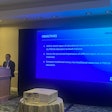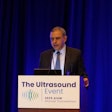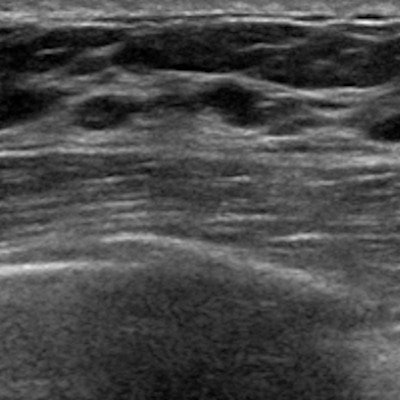
State breast density notification laws that advise women of supplemental screening options increase breast ultrasound use and appear to lead to a modest boost in cancer detection rates, according to a study published online March 21 in the American Journal of Public Health.
But these improved outcomes depend on the content of the notifications, wrote a team led by Susan Busch, PhD, of Yale School of Public Health in New Haven, CT.
"Dense breast notification legislation is associated with increased use of ultrasound and cancer detection after implementation only when notification of the possible benefits of supplemental screening is required," the researchers wrote.
The results also add fuel to a growing debate about the efficacy of supplemental breast ultrasound: A study published March 18 in JAMA Internal Medicine found that, in a population of women with dense tissue at varying breast cancer risk, supplemental breast ultrasound's benefits were modest while its harms were high.
Definitely dense
Half of U.S. women in their 40s and 50s have dense breast tissue, and 2D screening mammography doesn't always catch cancers in dense breasts, Busch and colleagues noted. Since 2009, more than 30 states have passed some form of breast density notification laws that apprise women of their tissue density; some of these bills also outline supplemental screening possibilities such as breast ultrasound or MRI.
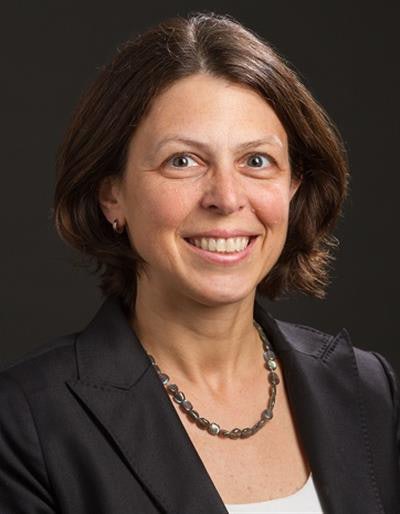 Susan Busch, PhD, of Yale School of Public Health.
Susan Busch, PhD, of Yale School of Public Health.But how these different types of state laws affect screening patterns has been unclear, Busch told AuntMinnie.com via email.
"Although past reports indicated use of supplemental ultrasound increased in certain states after [breast density] laws were introduced, whether these laws were associated with population-level changes in breast cancer detection was unknown," she said. "We were interested in learning whether the specific content of the notification affected the magnitude of any changes in the supplemental screening rate."
The study included data from more than 1 million mammograms provided to privately insured women in their 40s and 50s between 2014 and 2015. The women lived in 25 states with no notification law and nine states with such a law. Density notification legislation differed by state: Some only required women to be notified of their breast density status, while others also recommended supplemental tests. Busch and colleagues assessed whether the type of law affected clinical practice.
The researchers found that rates of breast ultrasound use and cancer detection rates were, in fact, higher in those states with density notification laws that required women to be advised of supplemental screening options. There was no similar increase in states that only required women to be notified of their density status.
| Association of type of density notification laws with supplemental testing and cancer detection rates (per 1,000 screening mammograms) | |||
| Measure | No notification law | Notification law that only advises women of tissue density | Notification law that also advises women of supplemental screening options |
| Breast ultrasound use rate | 71.1 | 72.3 | 81.5* |
| Breast MRI use rate | 4.09 | 4.58 | 4.55 |
| Biopsy rate | 16.6 | 17.1 | 16.3 |
| Cancer detection rate | 2.11 | 2.19 | 2.48* |
The group also found that, overall, women between the ages of 40 and 49 were more likely to undergo ultrasound and biopsy after screening mammography. Additionally, the team saw an increase in the use of supplemental MRI in this younger population among those who lived in states with notification laws requiring women to be advised of additional screening options.
Statistically significant ... but?
Although the researchers did find statistically significant increases in the use of supplemental breast ultrasound and in cancer detection following implementation of breast density notification with additional screening information, the change is small, according to Busch and colleagues. However, the increase in cancer detection could have clinical ramifications, the investigators noted.
"Despite the relatively low uptake in supplemental ultrasound, we observed a significant increase in cancer detection in states with dense breast notification plus supplemental screening laws," the team wrote. "This finding suggests that the type of information delivered in the notification has an impact on utilization and potentially on clinical outcomes. Women in states with [these laws] may be more likely to approach their provider regarding supplemental testing or may perceive more benefits of supplemental testing."
The study results demonstrate that the content of breast density notification letters matters, the group concluded.
"Overall, our findings suggest that if one of the goals of dense breast notification laws is to suggest that women discuss supplemental imaging with their provider and thereby increase utilization among women at the highest risk, the specific information delivered is important," Busch and colleagues wrote.

